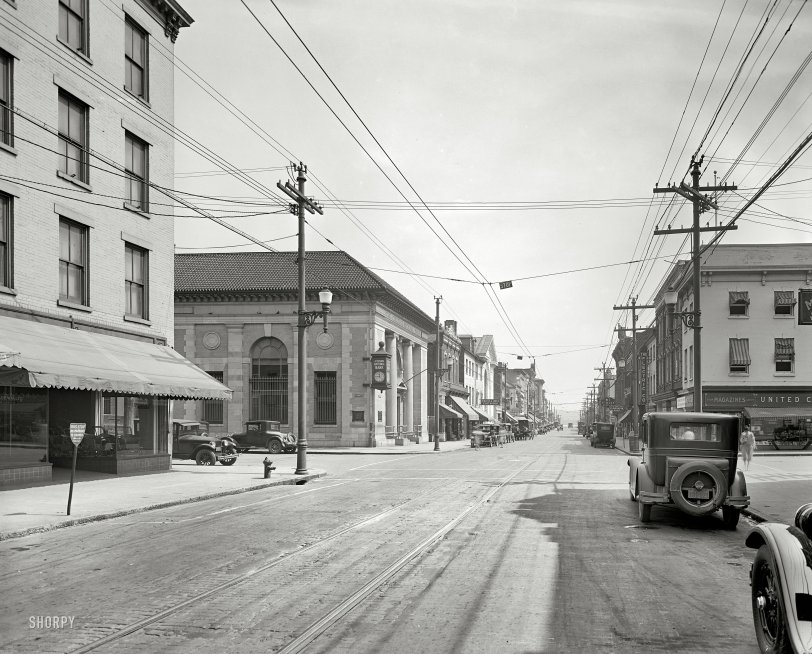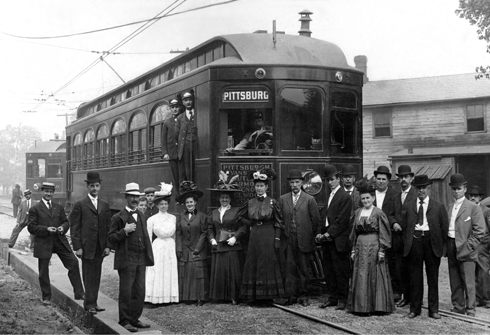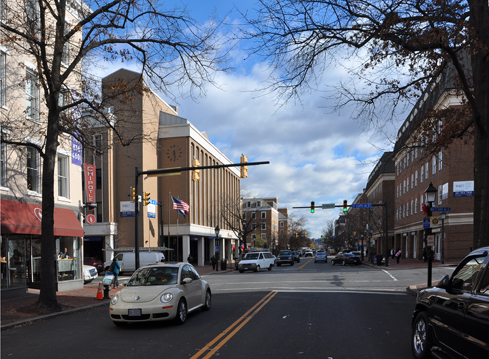


Framed or unframed, desk size to sofa size, printed by us in Arizona and Alabama since 2007. Explore now.
Shorpy is funded by you. Patreon contributors get an ad-free experience.
Learn more.

- Baldwin 62303
- Baldwin VO-1000
- Cold
- No expense spared
- Tough Guys
- Lost in Toyland
- And without gloves
- If I were a blindfolded time traveler
- Smoke Consumer Also Cooks
- Oh that stove!
- Possibly still there?
- What?!?
- $100 Reward
- Freeze Frame
- Texas Flyer wanted
- Just a Year Too Soon
- WWII -- Replacing men with women at the railroad crossing.
- Yes, Icing
- You kids drive me nuts!
- NOT An Easy Job
- I wonder
- Just add window boxes
- Icing Platform?
- Indiana Harbor Belt abides
- Freezing haze
- Corrections (for those who care)
- C&NW at Nelson
- Fallen Flags
- A dangerous job made worse
- Water Stop
Print Emporium
King Street: 1926

Alexandria, Virginia, 1926. "Citizens National Bank, King Street at St. Asaph Street." National Photo Company Collection glass negative. View full size.
Double Trolley Wires
Those double trolley wires were not that rare: it's a simple way to increase electrical capacity without stringing feeder cables. Cincinnati had them for lines within the city limits. Some lines used double wire for single track like that in the Alexandria photo for bi-directional travel. The Pittsburgh, Harmony, Butler and New Castle interurban in western PA was one of these-see photo below. I don't know what the case was in Alexandria, but it's not that strange.

Upward Mobility
I always look for the Model T Fords. Only a few here; mostly more expensive makes. This was an affluent area.
Double Trolley Wires
Could be either
i) A wire for each direction
or
ii) Extra feed capacity
They're too close together to be positive and negative conductors as used by trolleybuses and a few tram systems like Cincinnati.
Why the double wires
The double trolley wires are used in this case means one wire for each direction of travel on the "single" track section of street running. They are not insulated from each other so both wires are hot with "600 Volts DC" and the rails are used for the gound return to the sub station. Sometimes double wires were used instead of feeder cables to help distribute direct current which suffers from greater "line loss" over distances compared to alternating current(AC)that we use in our homes today.
Depending on the streetcar company "600 volts" could be anything from 550 volts to 750 volts.
Double wires for trolley buses or trackless trolleys are typically 24 inches appart and of course insulated from each other and require more "overhead" hardware in the sky for curves and junctions.
I don't know anything about Alexandria streetcars but looking at this picture it appears that their days are numbered due to the "farside" bus stop zones apparent at the intersection. The streetcar stops are "nearside" as evidenced by the "STOP" signs attached to the span wires that hold up the trolley wire on either side of the intersection.
2 Horsepower Transportation
Amongst all the cool vehicles there are still our four legged friends plying their trade.
Nice treatment with the clock on the Citizens National Bank. The clarity in this image reigns supreme. It's a shame our ghosted ladies weren't standing still, that would have really set the scene here.
+84
Below is the same view from December of 2010.

The Tragedy of "Urban Renewal"
I live two blocks from this intersection and eat in the Chipotle that now resides under that awning at least once a week.
Although Alexandria has a lot of great historic preservation, the two blocks in the distance were sacrificed to the wrecking ball, in the process replacing the famous Marshall House Tavern (where Col. Elmer Ellsworth met his end during the early days of the Civil War) with a nondescript Holiday Inn (since mercifully replaced with a Hotel Monaco).
Another Streetscape lost to time
Trolley wires
Never have seen double overhead trolley wires like that, except for trolley buses which have no ground connection through rails. Seems strange.
























On Shorpy:
Today’s Top 5